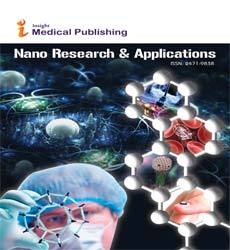Abstract
Identification of Postoperative Margins of Glioblastoma Multiforme Using Gold Nanoparticles Conjugated to Epidermal Growth Factor Antibodies
Background: Glioblastoma multiforme (GBM) is the most common primary malignant brain tumor in adults. Complete resection is impossible. Overexpression of epidermal growth factor receptor (EGFR) by the tumor has been associated with the level of malignancy and possibly with prognosis. Monoclonal antibodies may be used to identify tumor borders. The aim of the present study was to investigate the value of immunostaining with anti-EGFR antibodies conjugated to gold nanoparticles (GNPs) for detecting tumor infiltration into adjacent tissue.
Methods: Fresh GBM samples were collected intraoperatively from 14 patients treated at a tertiary medical center in 2014-2015, in accordance with the guidelines of the local and national ethic committees. Demographic, clinical, and outcome data of the patients were recorded. Analysis for EGFR overexpression by polysomy or amplification was determined by calculating the ratio of expression between pairs of the following genes: EGFR, GPER, and RNaseP. Tumor sample with known overexpression of EGFR underwent immunostaining with GNPconjugated anti-EGFR antibodies followed by light-scattering spectroscopy and electron microscopy. The findings were compared with routine hematoxylin and eosin staining.
Results: On molecular analysis, EFGR overexpression was identified in 10/14 GBM samples (71%). Amplification was detected in 50% and polysomy in 27%, and one sample showed both. Patients whose samples were characterized by an overexpression of EGFR died within 3-10 months, whereas 2 of the patients with normal EGFR expression were still alive 9 and <15 months after surgery. Tumor borders identified by anti-EGFR-GNP immunostaining exceeded the area considered "healthy" on routine pathologic study.
Conclusion: The high level of expression of EGFR in the majority of GBM tumors makes it possible to selectively distinguish tumor infiltration using anti-EGFR antibodies conjugated to GNPs. As staining with GNPs is tumor-functionaldependent, the findings may have important prognostic value. Preoperative mapping of tumor extent may facilitate complete resection of these difficult-toresect tumors.
Author(s):
David Hazon, Neelan J Marianayagam, Orit Barinfeld, Shalom Michowiz, Susana Fichman-Horn, Asaf Olshinka, Ella Kaganovsky, Avraham Hirshberg, Dror Fixler and Nitza Goldenberg-Cohen
Abstract | Full-Text | PDF
Share this

Google scholar citation report
Citations : 387
Nano Research & Applications received 387 citations as per google scholar report
Nano Research & Applications peer review process verified at publons
Abstracted/Indexed in
- Google Scholar
- China National Knowledge Infrastructure (CNKI)
- Directory of Research Journal Indexing (DRJI)
- WorldCat
- Publons
- Secret Search Engine Labs
- Euro Pub
Open Access Journals
- Aquaculture & Veterinary Science
- Chemistry & Chemical Sciences
- Clinical Sciences
- Engineering
- General Science
- Genetics & Molecular Biology
- Health Care & Nursing
- Immunology & Microbiology
- Materials Science
- Mathematics & Physics
- Medical Sciences
- Neurology & Psychiatry
- Oncology & Cancer Science
- Pharmaceutical Sciences


